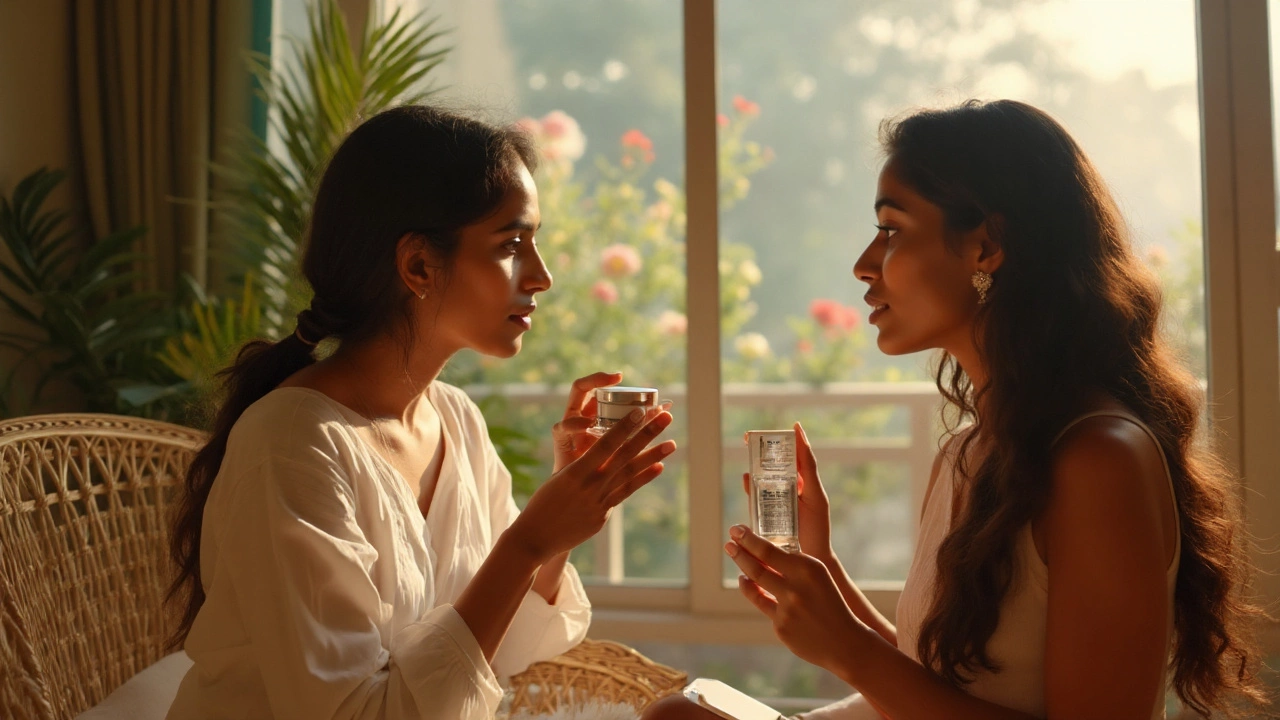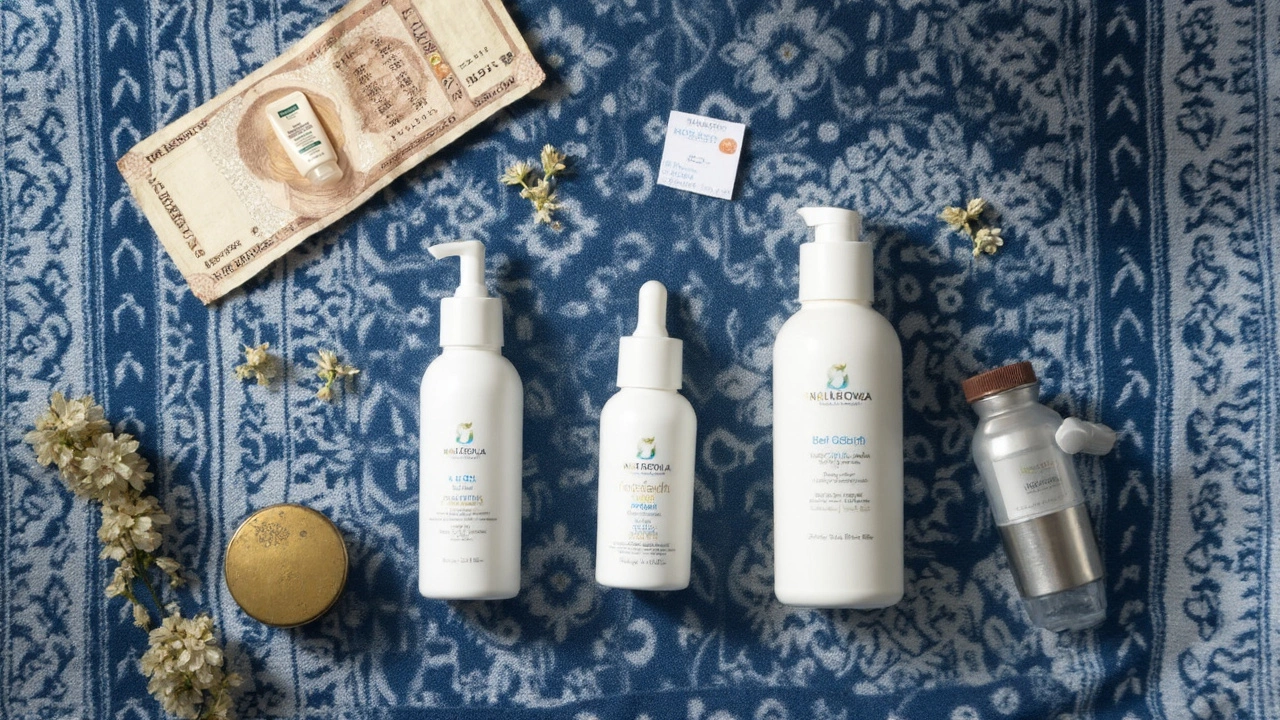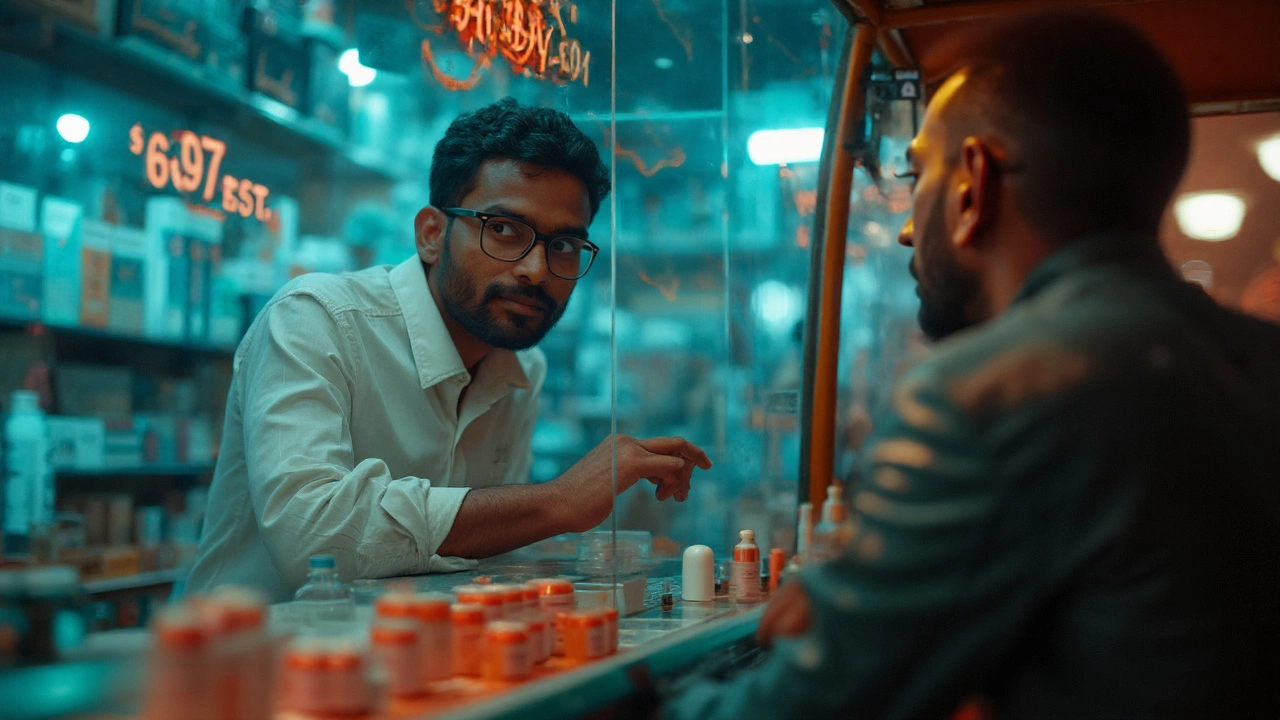
You want results, not a prettier bathroom shelf. The big question: does paying more actually buy better skin, or just better packaging? Here’s the honest, evidence-backed take-with clear rules, simple steps, and zero brand fluff. You’ll know exactly where to spend, where to save, and how to build a routine that works on your face and your budget.
TL;DR:
- Price doesn’t equal potency. Spend on proven actives and stable formulas; save on basics like cleansers and moisturizers.
- Retinoids, sunscreen, benzoyl peroxide, azelaic acid, AHAs/BHAs, and well-formulated vitamin C have the strongest data.
- Luxury can be worth it for stability, texture, and testing-if the active, packaging, and concentration are right.
- Marketing flags: vague claims, “medical grade” without data, miracle timelines, and pricey fillers (gold, caviar, stem cells) with no clinical proof.
- Use cost-per-use math and an 8-12 week test window to judge value. Track progress with the same lighting and angles.
When higher prices actually make sense (and when they don’t)
Think of skincare like tools. Some jobs demand specialty gear; others don’t. A $50 cleanser won’t clear acne better than a $10 one. But a stabilized 15% L-ascorbic acid serum in airless packaging can outperform a cheap, oxidized vitamin C that’s already turned brown.
Here’s what actually drives results:
- Active ingredients with solid evidence. Retinoids (retinol, retinaldehyde; prescription tretinoin), AHAs/BHAs, benzoyl peroxide, azelaic acid, niacinamide, mineral and organic UV filters. These have consistent clinical support in photoaging, acne, and pigment control (American Academy of Dermatology guidelines; multiple randomized trials and systematic reviews).
- Stability and delivery. Some actives are divas. L-ascorbic acid (pure vitamin C) needs low pH and oxygen-light protection. Retinoids are light/air sensitive. Good packaging (opaque, airless pumps), proper pH, and proven delivery systems justify a higher price.
- Concentration that matches studies. Look for ranges used in research: retinol 0.1-0.5% to start (up to 1% if experienced), retinaldehyde ~0.05-0.1%; L-ascorbic acid 10-20% with vitamin E and ferulic acid; niacinamide 2-5%; azelaic acid 10% OTC (15-20% prescription); salicylic acid 0.5-2%; glycolic/lactic 5-10% leave-ons.
- Formulation quality. Texture and layering matter because you’ll actually use it. Elegant sunscreens that you enjoy wearing daily beat heavy ones you avoid.
What doesn’t drive results:
- Fancy extracts and sparkles. Gold, diamond powder, caviar, and “stem cells” sound luxe. They don’t have solid, independent clinical evidence for wrinkle smoothing or acne clearing.
- “Medical grade” labels. Not a regulated term. Some brands do run studies, but the phrase alone doesn’t mean anything. Look for ingredient lists, concentrations, and test data.
- Price alone. Multiple head-to-heads show drugstore actives matching prestige outcomes when actives and concentrations are comparable. Cochrane and dermatology guidelines repeatedly emphasize ingredient over brand.
Bottom line: pay for formulation and function, not the jar. When in doubt, read the label like a detective.
| Product Type | What It Does | Evidence Strength | When to Splurge | Typical Price Range (USD) | Notes |
|---|---|---|---|---|---|
| Cleanser | Removes oil/makeup | High (function-wise) | Rarely. Choose gentle, pH ~5-6 | $6-$25 | Save. Avoid strong fragrance; gel for oily, cream for dry. |
| Moisturizer | Hydrates, supports barrier | High for basics | Only if you need special texture or added actives | $8-$40 | Save. Ceramides, glycerin, petrolatum work at all prices. |
| Sunscreen (SPF 30+) | Prevents UV damage, aging | Very high | Sometimes-for elegant wear and strong UVA protection | $10-$45 | Wearability = adherence. Broad-spectrum, water-resistant as needed. |
| Retinoids | Lines, texture, pores | Very high | For stable, low-irritation formulas or prescription | $12-$120 (Rx copays vary) | Start low go slow; long-term, prescription may be best value. |
| Vitamin C (L-ascorbic acid) | Brightening, antioxidant | High (when stabilized) | Often-stability costs money | $15-$100 | Low pH, airless/opaque packaging, 10-20% with E + ferulic. |
| Niacinamide | Redness, pores, oil, barrier | High | Rarely. Many great budget options | $6-$25 | 2-5% sweet spot. Higher can irritate. |
| Azelaic Acid | Acne, pigment, redness | High | Maybe-prescription strengths or elegant textures | $12-$80 (Rx varies) | Good for sensitive and pregnancy. Results in 8-12 weeks. |
| Benzoyl Peroxide | Kills acne bacteria | Very high | No. Cheaper is fine | $6-$20 | 2.5-5% is effective with less irritation than 10%. |
| AHAs/BHAs | Exfoliation, glow, acne | High | Sometimes-pH-correct, gentle formulas | $8-$50 | pH matters (AHA ~3.5-4). Don’t overdo with retinoids. |
| Peptides/Growth Factors | Firmness claims | Mixed/limited | Only if you can afford a long trial | $25-$200+ | Evidence is evolving; real-world results vary widely. |
Evidence notes you can trust: AAD guidelines back daily sunscreen and retinoids for photoaging and acne. Cochrane reviews and dermatology journals consistently support benzoyl peroxide and topical retinoids for acne. Stabilized vitamin C shows improved tone and photoprotection in controlled studies. Niacinamide has repeated trials for barrier support and pigment. Peptides and growth factors remain promising but inconsistent across brands.

Build a smart routine on any budget (step-by-step + formulas)
Your skin doesn’t need 12 steps. It needs the right ones for your goals. Use this simple flow:
- Pick one primary goal. Choices: acne, dark spots, fine lines/texture, redness/sensitivity, prevention. One goal keeps you from buying everything.
- Anchor your routine. Morning: sunscreen. Night: retinoid (unless pregnant/nursing-then use azelaic acid or bakuchiol as a gentler option).
- Add only what supports the goal. Acne? Benzoyl peroxide or salicylic acid. Dark spots? Vitamin C AM, azelaic acid PM. Redness? Niacinamide + barrier cream.
- Patch test, then ramp slowly. New actives 2-3x/week for two weeks, then increase if happy.
- Run an 8-12 week trial. Take selfies in the same lighting weekly. Keep other variables steady.
Example AM/PM frameworks you can tweak:
- Oily/acne-prone: AM-gentle gel cleanser, niacinamide, lightweight moisturizer, SPF 30+. PM-cleanser, benzoyl peroxide 2.5% or salicylic acid, moisturizer. Add retinoid at night on alternate days after two weeks.
- Dry/sensitive: AM-cream cleanser, hydrating serum (glycerin/HA), moisturizer with ceramides, SPF 30+. PM-cleanser, niacinamide 2-4% or azelaic acid 10%, rich moisturizer or petrolatum slugging on damp skin a few nights/week.
- Hyperpigmentation: AM-vitamin C (stabilized), moisturizer, SPF 50. PM-retinoid or azelaic acid. Spot treat with AHAs 2-3x/week. Consistent sunscreen is non-negotiable.
- Texture/fine lines: AM-vitamin C, moisturizer, SPF 50. PM-retinoid 3-5x/week, AHA 1-2x/week (not the same nights). Comfort with a barrier cream.
Cost-per-use math (your new superpower):
- Cost per use = Price ÷ (Volume ÷ Amount used per application). Example: $36 for 30 mL, using 0.25 mL per day = 120 uses → $0.30/use.
- Good value benchmark: key actives under $0.50/use if you’re on a budget; under $1/use if you’re paying for stability/elegance.
Rules of thumb that prevent regret buys:
- Save on: cleanser, basic moisturizer, benzoyl peroxide, niacinamide, many AHAs/BHAs.
- Consider splurging on: sunscreen you’ll wear daily, stabilized vitamin C, well-formulated retinoids that your skin actually tolerates.
- Packaging tells stories: opaque, airless pumps for vitamin C and retinoids; screw-top clear jars for active serums are a red flag.
- Concentration sanity: more isn’t better. 2% salicylic acid isn’t always better than 0.5%; 5% niacinamide can beat 10% for reactive skin.
- One new active at a time. If you react, you’ll know the culprit.
Timelines so you don’t give up too soon:
- Immediate: hydration boost, glow from AHAs (days).
- 4-6 weeks: fewer breakouts (benzoyl peroxide/salicylic acid), calmer redness (niacinamide).
- 8-12 weeks: improved pigmentation (azelaic acid, vitamin C + sunscreen), softer fine lines (retinoids).
- 6-12 months: deeper texture and firmness improvements with retinoids and diligent UV protection.
Patch testing (10-minute setup, worth it):
- Apply a pea-size to the side of the neck or behind the ear nightly for 3 nights.
- No burning, blistering, swelling? Move to the face 2-3x/week. Mild tingling is normal for acids; stinging/redness that lasts hours isn’t.
- If irritation appears, halve the frequency and buffer with moisturizer.
Special notes for life stages and skin tones:
- Pregnant/nursing: skip prescription retinoids and high-dose salicylic acid masks; azelaic acid and niacinamide are often used. Confirm with your clinician.
- Deeper skin tones: watch for post-inflammatory hyperpigmentation; be gentle with acids and spot treat. Azelaic acid shines here.
- Rosacea-prone: avoid strong fragrances and high-percentage AHAs; consider azelaic acid and mineral sunscreens.
Where evidence meets experience:
- Retinoids: Longstanding dermatology guidance supports retinoids for photoaging and acne; multiple controlled studies show collagen boost and fine line reduction with steady use (think months, not days).
- Vitamin C: Stabilized L-ascorbic acid at 10-20% with vitamin E and ferulic acid shows improved photoprotection and pigmentation in controlled settings when stable and pH is low.
- Niacinamide: Multiple trials document barrier improvement, redness reduction, and modest pigment evening at 2-5%.
- Benzoyl Peroxide: Strong evidence for acne across strengths; 2.5-5% balances efficacy with less irritation.
- Azelaic Acid: Effective for acne, rosacea, and pigment; prescription strengths are more potent but OTC helps with steady use.

Real-world scenarios, cheat sheets, and FAQs
Let’s make this practical with situations you probably face.
Scenario 1: “My budget is $50/month. I want fewer breakouts and dark marks.”
- Spend: benzoyl peroxide wash or leave-on ($8-$15), azelaic acid 10% ($12-$25), SPF 50 you’ll actually wear ($12-$20).
- Save: basic cleanser and moisturizer ($10-$20 total).
- Why it works: benzoyl peroxide prevents new acne; azelaic acid lightens marks and calms redness; daily sunscreen prevents new spots and helps old ones fade.
Scenario 2: “I’m 35+, want smoother texture, but my skin is touchy.”
- Spend: a gentle, well-formulated retinoid with soothing excipients ($25-$70), elegant sunscreen ($15-$40).
- Save: fragrance-free moisturizer and cleanser ($10-$30).
- Why it works: texture softens with retinoids over months; nicer vehicles reduce irritation so you stick with it.
Scenario 3: “I love actives and can splurge, but I want proof.”
- Spend: stabilized vitamin C in airtight, opaque packaging ($35-$100), prescription tretinoin if appropriate (often cheaper long term with insurance).
- Save: skip redundant serums (peptides + growth factors + stem cells all at once). Pick one category to test for 12 weeks.
- Why it works: you funnel money into the highest-yield levers and avoid paying twice for the same promise.
Scenario 4: “Sunscreen pills and blue light claims are everywhere.”
- Spend: on a sunscreen texture you love (chemical or mineral). That’s your daily non-negotiable.
- Save: on trendy add-ons. Oral antioxidants and blue-light shields have mixed evidence for daily life; your SPF and shade do the heavy lifting.
SPLURGE vs SAVE cheat sheet:
- SPLURGE: sunscreen you enjoy wearing; stabilized vitamin C; elegant, low-irritation retinoid; prescription actives if indicated.
- SAVE: cleanser, basic moisturizer, niacinamide, benzoyl peroxide, many AHAs/BHAs.
- CASE-BY-CASE: azelaic acid (texture matters), tinted mineral sunscreen (tone match may cost more), peptide serums (test cautiously).
Decision mini-tree:
- Is the product a basic (cleanser/moisturizer)? → Save.
- Is the product an active with strong evidence? → Check active name, concentration, packaging. If stable and elegant, splurge is optional but justifiable.
- Is the claim vague or miraculous? → Pass or buy the budget version and test.
Marketing red flags to avoid:
- “Instant lift” or “erase in 7 days” for wrinkles or pigment. Collagen remodeling and melanin turnover take weeks to months.
- Clear jars for light-sensitive actives. If you can see it, light can too.
- Endless proprietary complexes with no ingredient percentages.
How to read labels fast:
- Top 5-10 ingredients make up most of the formula.
- Actives are often listed with exact percentages if the brand is proud of them. If not, assume it’s low.
- Fragrance near the top? Sensitive skin may flare.
How to test “dupes” vs luxury fairly:
- Pick a single endpoint (e.g., brightness) and a single active (e.g., vitamin C).
- Split-face test for 8 weeks. Left side luxury, right side dupe.
- Same routine otherwise. Weekly photos. If you can’t see a difference, your wallet wins.
Mini-FAQ
- Are luxury sunscreens better? Sometimes. They can feel lighter, leave less cast, and have higher UVA protection claims (outside the U.S.). If a $15 SPF feels great and you wear it daily, that’s the winner.
- Do expensive moisturizers hydrate better? Not usually. Ceramides, glycerin, hyaluronic acid, petrolatum, and squalane work at every price. Pay more only for texture you love or added actives you’ll use.
- Are peptides worth it? Mixed bag. Some lab data is promising, but independent, large clinical trials in finished products are limited. Try one peptide product for 12 weeks before deciding.
- Is packaging really that important? For retinoids and vitamin C, yes. Opaque, airless, and low-air exposure keep actives potent.
- How much should I spend monthly? Many see strong results at $30-$60/month focusing on sunscreen + one active. If you love the ritual and can afford more, spend it on things you consistently use.
- Do I need a toner? Not required. If it hydrates and your skin likes it, fine. If it’s an astringent alcohol toner, it may be drying.
- How long before I judge a product? Hydration: days. Acne and glow: 4-6 weeks. Pigment and lines: 8-12 weeks. Retinoid remodeling: months.
- Does “clean” or “organic” mean safer? Not automatically. Essential oils and natural fragrances can irritate. Choose what your skin tolerates.
Next steps by persona
- Beginner, tight budget: buy a gentle cleanser, a basic moisturizer, a 2.5% benzoyl peroxide or 0.5-2% salicylic, and SPF 30+. Total: ~$35-$55. Use for 8 weeks before adding anything else.
- Intermediate, chasing glow: keep basics, add stabilized vitamin C in the morning and a low-strength retinoid at night. Consider spending where stability and feel are clearly better.
- Sensitive skin: prioritize barrier. Fragrance-free basics, niacinamide 2-4%, mineral sunscreen. Add azelaic acid before retinoids.
- Hyperpigmentation focus: sunscreen SPF 50 every single day, vitamin C AM, azelaic acid or retinoid PM. Spot treat with AHA pads 2x/week. Photos monthly.
- Acne with frequent marks: benzoyl peroxide AM or PM, retinoid alternate nights, azelaic acid on off nights, SPF daily. If moderate-severe, consider a dermatology visit-prescriptions can be more effective and sometimes cheaper than rotating pricey over-the-counter serums.
Quick checklist before you buy anything pricey:
- Can I name the active, concentration, and why I need it?
- Is the packaging right for that active (opaque/airless for light- and air-sensitive ingredients)?
- What’s the cost per use? Can I stick with it for 8-12 weeks?
- Do I have a cheaper equivalent to test first?
- Is my sunscreen game consistent? If not, fix that first.
One last truth: consistency beats cost. A $20 routine you stick to will outperform a $200 routine you abandon. If a pricier formula makes you consistent because it feels amazing, it can be “worth it” to you. If not, the science says a well-built budget routine can match it. Either way, you now know how to choose. And yes, expensive skincare can be worth it-when you’re paying for proven actives, stability, and a texture you’ll use every day.
 Hair Care
Hair Care